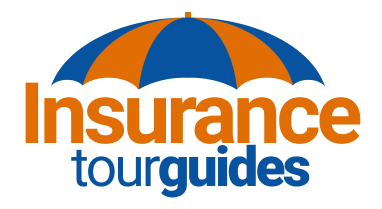Homeowners insurance is a vital part of protecting your most significant investment—your home. Understanding the basics of homeowners insurance, including the different types of coverage, common exclusions, and tips for choosing the right policy, can help ensure you have the protection you need. This guide will provide an overview of homeowners insurance and offer advice on safeguarding your home and belongings.
Types of Homeowners Insurance Coverage
Homeowners insurance typically includes several types of coverage that protect different aspects of your property and liability. Here are the main types of coverage you should be aware of:
1. Dwelling Coverage: Dwelling coverage pays for repairs or rebuilding your home if it’s damaged or destroyed by covered perils, such as fire, wind, hail, or lightning. This coverage applies to the structure of your home, including walls, roof, floors, and built-in appliances.
2. Other Structures Coverage: This coverage protects structures on your property that are not attached to your home, such as detached garages, sheds, fences, and gazebos. It typically covers the same perils as dwelling coverage.
3. Personal Property Coverage: Personal property coverage helps replace or repair your belongings if they are damaged, stolen, or destroyed by a covered peril. This includes items such as furniture, electronics, clothing, and appliances. It’s essential to take an inventory of your belongings to ensure adequate coverage.
4. Liability Coverage: Liability coverage protects you if someone is injured on your property or if you accidentally cause damage to someone else’s property. It covers legal fees, medical expenses, and any settlements or judgments up to the policy limit.
5. Additional Living Expenses (ALE) Coverage: ALE coverage, also known as loss of use coverage, pays for temporary living expenses if your home is uninhabitable due to a covered loss. This can include hotel bills, restaurant meals, and other living expenses while your home is being repaired or rebuilt.
Common Exclusions
While homeowners insurance provides comprehensive coverage, there are some common exclusions you should be aware of:
1. Flood Damage: Standard homeowners insurance policies do not cover flood damage. If you live in an area prone to flooding, you’ll need to purchase separate flood insurance through the National Flood Insurance Program (NFIP) or a private insurer.
2. Earthquake Damage: Earthquake damage is typically not covered by standard homeowners insurance policies. If you live in an earthquake-prone area, consider purchasing separate earthquake insurance.
3. Maintenance Issues: Damage resulting from lack of maintenance, wear and tear, or neglect is generally not covered. Homeowners are responsible for maintaining their property and preventing avoidable damage.
4. Certain High-Value Items: Standard policies may have coverage limits for high-value items such as jewelry, artwork, and collectibles. You may need to purchase additional coverage or endorsements to fully protect these items.
5. Acts of War or Terrorism: Damage caused by acts of war or terrorism is usually excluded from standard homeowners insurance policies.
Tips for Choosing the Right Policy
Selecting the right homeowners insurance policy involves evaluating your coverage needs and comparing different options. Here are some tips to help you choose the best policy:
1. Assess Your Coverage Needs: Determine the amount of coverage you need for your dwelling, other structures, personal property, and liability. Ensure your policy limits are sufficient to cover the cost of rebuilding your home and replacing your belongings.
2. Consider Replacement Cost vs. Actual Cash Value: Replacement cost coverage pays to repair or replace your property at current prices without deducting for depreciation. Actual cash value coverage pays the depreciated value of your property. Replacement cost coverage is typically more expensive but provides better protection.
3. Shop Around and Compare Quotes: Obtain quotes from multiple insurance companies to compare coverage options and premiums. Use online comparison tools and consult with insurance agents to find the best policy for your needs and budget.
4. Review Deductibles: Choose a deductible that fits your financial situation. A higher deductible can lower your premium but means you’ll pay more out-of-pocket in the event of a claim. Balance your deductible with your ability to cover potential expenses.
5. Check for Discounts: Many insurance companies offer discounts for bundling policies, having security systems, being claim-free, and more. Ask about available discounts and take advantage of any that apply to you.
6. Understand Policy Exclusions and Limits: Carefully review your policy to understand what is and isn’t covered. Be aware of any exclusions and coverage limits, and consider purchasing additional coverage if necessary.
Protecting Your Home and Belongings
In addition to having the right insurance coverage, there are steps you can take to protect your home and belongings:
1. Install Security Systems: Security systems, including alarms, cameras, and motion detectors, can deter burglars and reduce the risk of theft. Many insurance companies offer discounts for homes with security systems.
2. Perform Regular Maintenance: Maintain your home to prevent damage from wear and tear. Regularly inspect your roof, plumbing, electrical systems, and HVAC units to address any issues before they become major problems.
3. Keep an Inventory: Create a detailed inventory of your personal belongings, including photos, descriptions, and receipts. This can help ensure you have adequate coverage and make the claims process smoother if you need to file a claim.
4. Prepare for Emergencies: Have an emergency plan in place for natural disasters and other emergencies. Keep important documents, including your insurance policy, in a safe, accessible location. Consider having emergency supplies on hand, such as water, non-perishable food, and first aid kits.
5. Make Your Home Disaster-Resistant: If you live in an area prone to natural disasters, take steps to make your home more resistant. This can include reinforcing your roof, installing storm shutters, and securing heavy furniture and appliances.
Conclusion
Homeowners insurance is a critical part of protecting your home and financial well-being. By understanding the types of coverage available, common exclusions, and tips for choosing the right policy, you can ensure you have the protection you need. Regularly review your policy, take steps to safeguard your home and belongings, and stay informed about your coverage options to maintain peace of mind.

